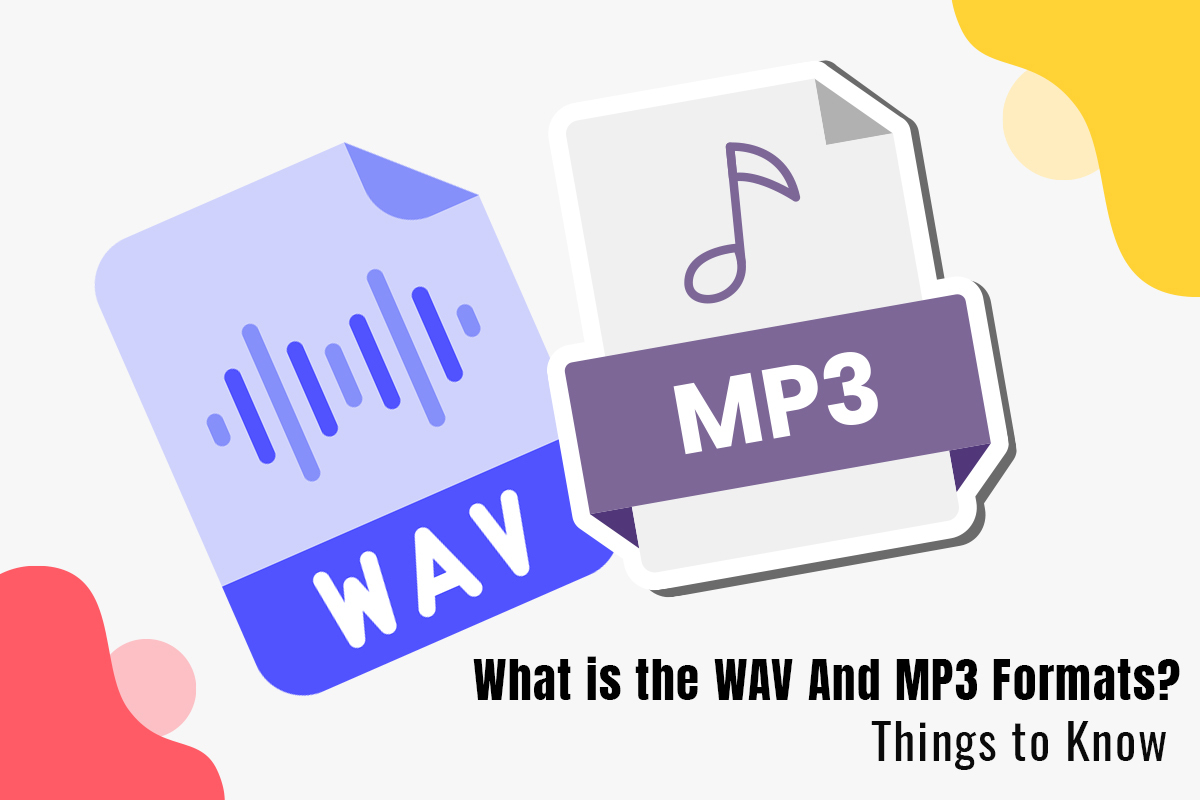What are the WAV and MP3 Formats? Things to Know

Audio file formats are immensely popular among the masses these days, especially among those individuals who work in the music industry, such as musicians, podcasters, etc. Thanks to their popularity, different types of audio formats, each differing from the other in terms of features, are readily available for anyone who wishes to create or work with audio.
Two popular digital audio formats include WAV and MP3. This article will shed light on both the top-notch audio formats and cover numerous related aspects that users should know. Let us dive right into it:
The WAV Format – Things to Know:
The WAV format, also referred to as WAVE, is deemed one of the oldest digital audio formats. Despite being old, the format is still extensively used by users all around the globe. The format was developed by Microsoft and IBM for listening to audio files on computers. However, its use case has changed drastically. Currently, it is used for archiving and storing digital audio.
The format is popular for storing data in an uncompressed manner, which is why WAV files occupy a huge chunk of storage space, i.e., WAV files are very large. This is one of the reasons why WAV files are not usually uploaded on or downloaded from the Internet.
Features of the WAV Format:
Here are some of the most prominent features of the WAV format:
- Besides the audio part, the format allows users to store other information related to the file, such as its mono/stereo property, the total number of tracks, sampling rate, bit depth, etc.
- The WAV format supports lossy compression even though the format is generally uncompressed. To achieve this, users can use third-party or native audio tools.
- The format is derived from another file format called RIFF or the Resource Interchange File Format. RIFF is a generic container format for storing audio and video data in chunks.
- WAV files are very big, i.e., they occupy a lot of storage space, which is why they are generally not downloaded by users. The format supports files up to 4 GB. Any file that exceeds this limit will not be compatible or supported for encoding purposes.
Converting WAV Files to MP3 – A Brief Look:
Since WAV files occupy too much storage space, most users tend to convert WAV files into another format, which in most cases, is MP3. Out of all the features the latter has, its ability to store audio files in a compact manner makes it very popular. Individuals wishing to turn WAV into MP3 can get the job done in multiple ways.
macOS users can convert any WAV file to an MP3 one by using Permute, a top-tier third-party converter application specially designed for changing the format of files. Besides this, Mac users can also opt to get the job done using the native Music utility. Similar to Mac users, Windows users can also get the job done using the native Windows Media Player or third-party applications like VideoProc Converter.
The MP3 Format – Everything You Need to Know
MP3 or the MPEG-1 Audio Layer-3 refers to a standard type of technology and format used for compressing audio sequences into a compact-sized file. Thanks to the format’s ability to store sound sequences in approximately one-twelfth of the original file’s size, the format is deemed the universal standard in digital audio formats.
All MP3 files sport a “.mp3” extension. Even though the format compresses audio sequences into a small-sized file. It maintains the sound quality, i.e., the quality does not degrade with compression. For the past few decades, the MP3 format has been extensively used by millions of people around the globe for storing music files on a variety of devices, including smartphones, computers, tablets, etc.
Features of the MP3 Format:
Here is a brief look at some of the most prominent features of the MP3 format that people should know:
- The MP3 container format is an extension of or derived from the popular MP2 format, another lossy audio compression format.
- The format is renowned for maintaining the CD quality of the audio files. For example, even post-compression, the quality of the audio stored does not deteriorate. This is why most users prefer the MP3 format over other digital audio formats.
- When it comes to compatibility, no format comes close to the MP3 format. It is supported by or compatible with all major operating systems, including Windows, macOS, etc., and devices.
- Since it occupies very little storage space, it is actively used for storing and sharing audio files. Thanks to the little storage space that MP3 files require. Millions of individuals use the format daily to share music files.
Both the MP3 and WAV formats are highly useful digital audio formats that are extensively used all around the globe. Any individual who wishes to know more about either of the formats may refer to the points mentioned above.

